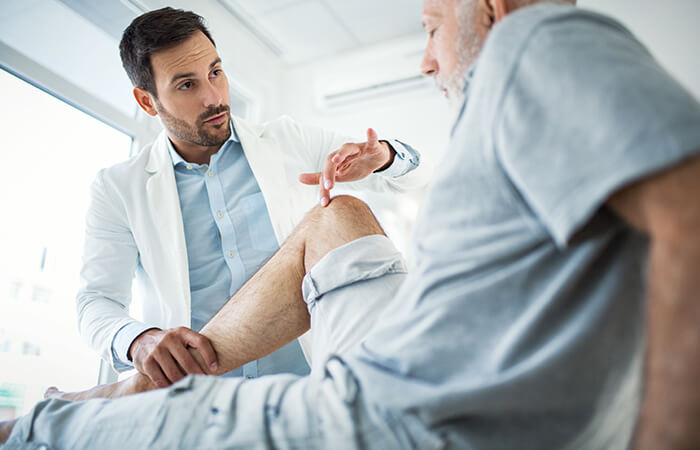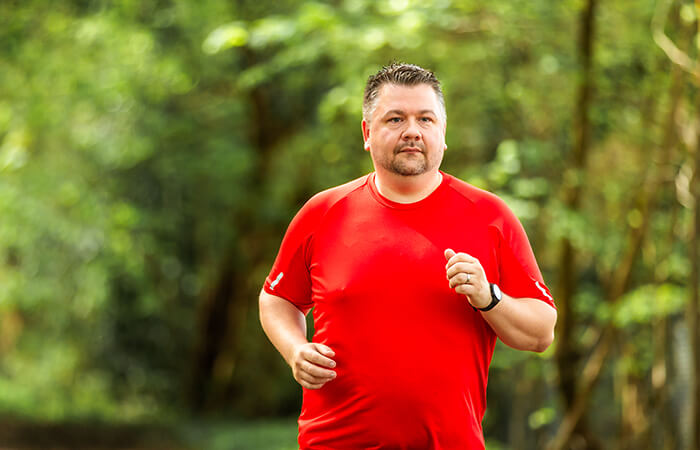Why do joints make noise?
Know the causes, types and treatment for joint noises
Joints make up very important parts of our bodies and are made up of multiple parts including articular cartilage, ligaments, synovium and synovial fluid. Joint health is important to everyday life, and it is important to be aware of your body, especially if you begin to hear noises with movement.What causes noises in joints?
There are multiple factors that can cause noises in the joints, some being biological (physiologic), and others being accompanied by an underlying condition (pathologic). Physiologic noises occur with normal function and are not concerning or damaging. Although the onset of these noises is unknown, there is no intervention needed.On the other hand, pathologic noises are caused by a specific abnormality and may indicate damage or underlying injury. Even if the injury is small, symptoms can be clear and painful and may require intervention. Examples of injuries include degenerative joint disease, meniscus tear, loose cartilage and the gradual onset of a chronic condition. Instability in the kneecap, elbow, shoulder and hip can also cause these noises and pains.
Types of noises
There are multiple types of noises that can come from joints, and sometimes it can be difficult to distinguish the exact noise and what is causing it. Examples of noises and the causes of these noises include:
- Popping
- Sudden sharp pop.
- Physiologic cause: “cracking” joint.
- Pathologic cause: rupture of ligament.
- Clunking
- Loud singular noise that occurs with a release against resistance.
- Physiologic cause: inflamed plica band.
- Pathologic cause: fibrotic nodule, patella instability.
- Clicking
- Fainter, singular noise that occurs with motion.
- Physiologic cause: shifting gas/fluid.
- Pathologic cause: meniscus injury.
- Snapping
- Sharp sensation of one structure over another.
- Physiologic cause: hip flexor.
- Pathologic cause: (when painful) plica band causing cartilage wear.
- Grinding
- Continuous friction.
- Physiologic cause: muscle imbalance with motion.
- Pathologic cause: arthritis, cartilage injury.
Prevention
There are many methods of preventing noises and injury in the joints. Prevention begins with maintaining healthy cartilage within the body. This can be done by keeping a balanced diet and maintaining a healthy weight. Taking supplements such as glucosamine, chondroitin, calcium and vitamins D, C and E can benefit the body and mind.Along with caring for the inner body, physical activity is important to maintain healthy upkeep. To do this, it is recommended to stay fit, healthy and active by practicing low impact exercises such as swimming, walking, biking and using an elliptical. These activities help maintain a healthy range of motion, strengthen ligaments and movement that is healthy for cartilage. Alongside exercise, physical therapy can be beneficial to strengthen core and lower extremity muscles and can help with walking mechanics and knee stabilization.
If you feel it is safe to do so, or with the recommendation from your doctor, more intense exercises can be beneficial. Cross-training to balance joint pressure can be helpful, along with participating in active recovery, like swimming, cycling and jogging which helps certain joints and muscles to rest while receiving cardiovascular benefits. Yoga and Pilates aid in maintaining strength in core and other small muscles. While practicing, it is recommended to use low weights with high repetitions. These exercises will help maintain flexibility which will help avoid snapping in ligaments and relieve pressure from joints during exercise. When exercising, make sure to take one or two days off a week and avoid consecutive intense workout sessions to overwork yourself.
Depending on your occupation, you may be more at risk at work than anywhere else. In the workplace, it is important to practice safety wherever you are. At work, if you are jumping from a truck, dock or steps, it is important to use proper steps, avoid repetitive jumping and keep three points of contact when using a ladder. While lifting items at work, try to avoid ground-level lifting and do not lift and pivot while changing directions. Kneeling at work can cause damage to the knees, and it is important to avoid prolonged kneeling and practice using padding under the knees. Wherever you are, maneuver the area carefully to avoid slips, trips and falls.
Treatment
Treatment options vary depending on what the condition is and where it is taking place, so it is best to let your doctor know if you are having any pain or discomfort. In the case of physiologic noises, no treatment is usually required. Pathologic treatments focus on a specific cause and usually begin in physical therapy, but some conditions may require imaging such as X-rays, ultrasounds, MRIs or CT scans. Some treatment might require a diagnostic arthroscopy to repair or debride a meniscus tear, repair pathologic plica, smooth small cartilage lesions or remove loose fragments. Repair and reconstruction may need to be done to parts of the joint to improve stability in some situations. Depending on the joint, other options may be available.
Pathologic cartilage injuries do not heal on their own and are symptomatic. To treat symptoms at home, using ibuprofen, ice and topical treatments can help temporarily relieve pain and discomfort. There are various injection options available for pain relief. One example includes cortisone that can be administrated to give relief for up to a year. This injection only treats symptoms and will not heal cartilage but can end up damaging tissue when used repeatedly. Another example includes lubricating injections, which give relief to 70 to 75% of patients after one to five shots. Along with these methods, platelet-rich plasma (PRP) is also an option. PRP is an anti-inflammatory created by drawing blood from the arm and spinning it into plasma platelets to help restore or maintain injured cartilage. Studies have shown this to have moderate effectiveness compared to other injections.
Other treatments include surgical repair, physical therapy and cartilage restoration. Cartilage restoration options include autologous cartilage implantation, osteochondral allograft and joint replacement. Autologous cartilage implantation is performed by taking a biopsy of patients' own cartilage cells and using it to replace injured cartilage. Osteochondral allograft takes grafts from the cadaver bone and cartilage to replace damaged cartilage. A joint replacement may be a last step if there is a widespread injury to treat persistent pain, dysfunction and disruption of daily activities.



